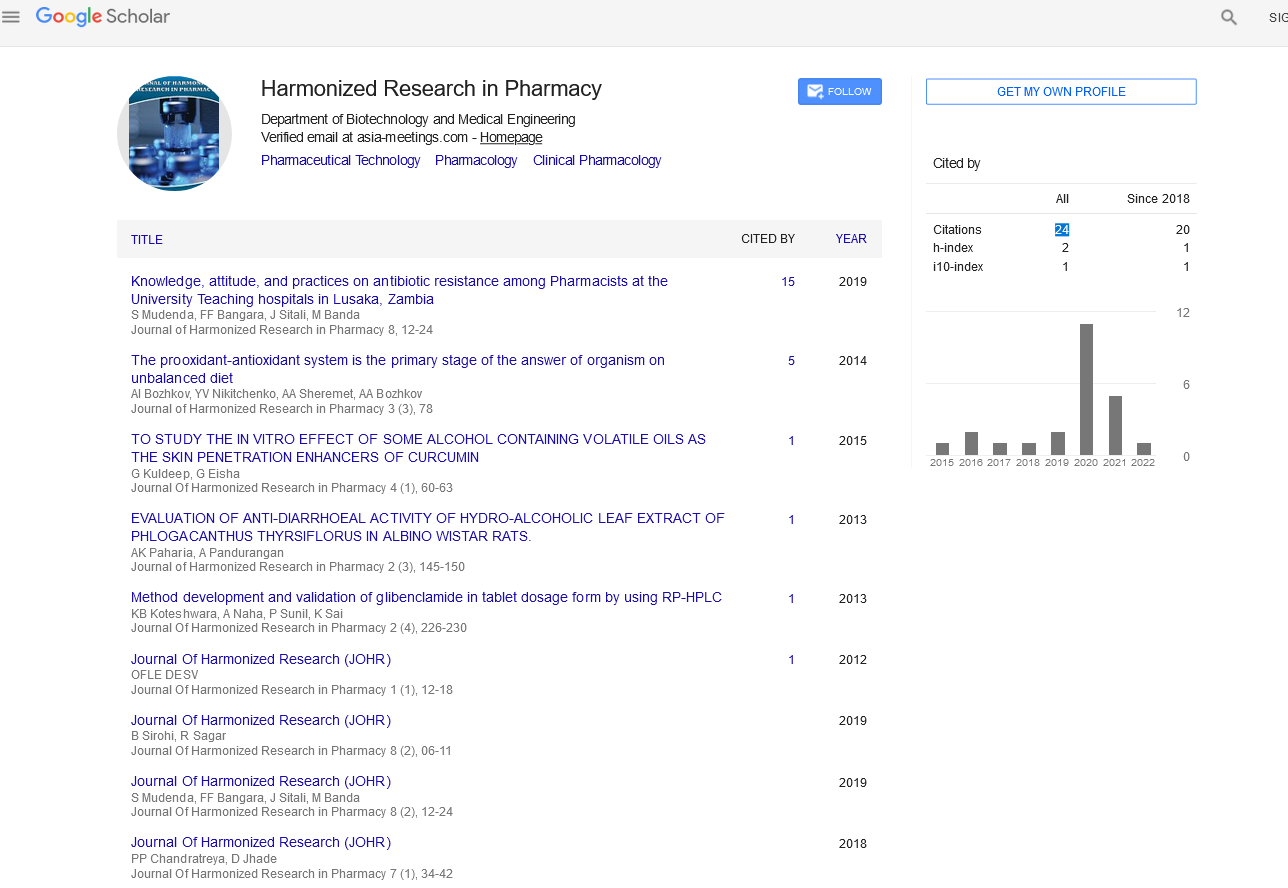Short Communication - (2022) Volume 11, Issue 2
OUTPATIENT PHARMACY SERVICES: PATIENT SATISFACTION
Anita Arora*Received: May 27, 2022, Manuscript No. JHRP-22-69471; Editor assigned: May 30, 2022, Pre QC No. JHRP-22-69471 (PQ); Reviewed: Jun 13, 2022, QC No. JHRP-22-69471; Revised: Jun 20, 2022, Manuscript No. JHRP-22-69471 (R); Published: Jun 30, 2022, DOI: 10.30876/2321-0958.22.11.182
Description
The enhanced service concept has drawn increasing attention as one of the elements affecting hospitals’ overall competitiveness. Outpatient pharmacies serve as one of the key entrances to hospitals and offer patients better medical care, which is crucial for establishing patient confidence and improving the doctor- patient connection. The primary variables influencing outpatient pharmacy satisfaction centre on a number of different areas, including waiting time, medication cost, waiting environment, and service attitude, the last point of contact for patients is the outpatient pharmacy. Patients’ satisfaction with the hospital will be impacted by the lengthy wait times, which will reflect poorly on hospital administration [1].
The efficiency of the waiting process and the expertise of the window staff can have an impact on patients’ moods and the perception of the hospital, particularly during busy times. The inquiry determined that the unreasonably designed pharmacy floor plan, the straightforward procedure, and the unreasonably arranged employees were the causes of the lengthy wait times for taking medications. This essay explores methods to enhance the physical design and workforce planning of pharmacies in order to decrease patient waiting times while receiving medication and increase customer satisfaction. In order to do this, we presented the BI concept in February 2019 to carry out in-depth analysis, real- time monitoring, and early warning of the current data. In order to maximise the use of human resources in outpatient pharmacies, create a flexible and effective scheduling system for pharmacists. Additionally, to improve job efficiency and shorten the distance between deployment employees and the pharmaceutical shelves, they were moved [2].
Clinical pharmacy services are currently provided using medical information technology and hospital pharmacy automation, both of which have increased the productivity and standard of pharmaceutical services [3]. After selling the automation system in his hospital, it was discovered that the annual return on investment was only 0.15 percent, indicating that there were typically fewer than 4000 outpatient visits per day and that there was some doubt about the cost-effectiveness of using an automated dispensing system. Most hospital pharmacies still employ people-centered dispensing mode today since automation cannot be widely implemented in a short amount of time. Future pharmacies will become more intelligent and automated as artificial intelligence and information technology advance [4]. In order to increase the effectiveness of pharmacists, decrease the time patients must wait to take their medications, and increase customer satisfaction with outpatient pharmacy, we thoroughly analysed the data accessible in the outpatient pharmacy [5].
Conclusion
People will continue to employ information technology to organise the work efficiency curve of pharmacists in accordance with each stage of the medication intake procedure. In order to arrange staff more properly, increase work efficiency, and save more time, people will learn about each pharmacist’s job efficiency area. In order to increase the general calibre of the pharmaceutical workforce and lower errors, we will also keep bolstering training for the workforce. By adding pharmaceutical services such auditing posts, medication consulting offices, and safety knowledge publicity, it is also possible to optimise the operational process and strengthen the division of labour and cooperation among staff members in order to keep them in excellent working condition. Enhance the standard and calibre of improving patient happiness through pharmacy services.
References
- Ilardo ML, Speciale A. The community pharmacist: perceived barriers and patient-centered care communication. Int J Environ Res Public Health. 2020;17(2):536.
- Shimada H, Ikuta H, Kumazawa K, Nomi M, Shiojiri M, Kawase A, et al. Relationship between the risk of idiosyncratic drug toxicity and formation and degradation profiles of acyl-glucuronide metabolites of nonsteroidal anti-inflammatory drugs in rat liver microsomes. Eur J Pharm Sci. 2022;106193.
[Crossref] [Google Scholar] [Pubmed]
- Al Badi K. Discrete event simulation and pharmacy process re-engineering. Int J Health Care Qual Assur. 2019;32(2):398-411.
[Crossref] [Google Scholar] [Pubmed]
- Gupta R, Rajpoot K, Tekade M, Sharma MC, Safavi M, Tekade RK. Factors influencing drug toxicity. Pharmacok. 2022; 27-50.
- Sengupta P, Chatterjee B, Tekade RK. Drug toxicity and forensic pharmacokinetics. Pharmacok Toxicok Consid. 2022; 425-486.

Google Scholar citation report
Citations : 147
Journal of Harmonized Research in Pharmacy received 147 citations as per google scholar report









